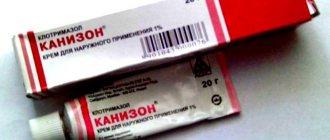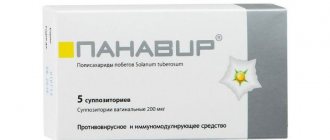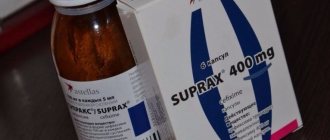Photo: medic.ru
Photo: lebucos.ru.net Photo: farmaon.ru
Photo: yandex.ru
Glevo is an antibacterial drug. Belongs to the group of broad-spectrum fluoroquinolones. Active ingredient: Levofloxacin. Glevo has a bactericidal effect.
The drug is used for bacterial infections caused by microorganisms sensitive to the drug. It has convenient release forms: tablets (of different packaging), solution for infusion. After taking the drug, about 70% is excreted unchanged in the urine within 24 hours, about 87% of the dose is excreted within 48 hours, less than 4% is excreted in feces within 72 hours.
Composition and pharmacological action of the antibiotic "Glevo 500 mg"
The active substance of the drug - levofloxacin - very effectively fights infections caused by microorganisms resistant to penicillins, aminoglycosides, and cephalosporins. In addition to the main one, Glevo 500 mg also contains auxiliary components. These include microcrystalline cellulose, povidone (crospovidone), magnesium stearate.
To understand what Glevo 500 helps with, you need to understand its pharmacological parameters. Levofloxacin inhibits the process of DNA synthesis and promotes significant metamorphoses in the cytoplasm, cell membranes and walls of protozoan microorganisms. As a result, the connection of DNA breaks is disrupted. Microbes and bacteria gradually die.
Once in the human body, Glevo tablets are well and quickly absorbed. The active substance has an excellent ability to penetrate the tissues and fluids of internal organs: lungs, bronchi, organs that make up the genitourinary system, sputum, mucus, blood.
The drug content reaches its maximum values after 1-2 hours. The half-life is 6-8 hours. Part of the oxidation process occurs in the liver. A significant part of clearance (purification) occurs through the kidneys and is excreted in the urine. As a result, after 72 hours, about 4% of the amount of the substance taken orally remains in the intestines.
Indications for use
According to the instructions, Glevo is prescribed for the treatment of infectious and inflammatory diseases caused by microorganisms sensitive to the active substance of the drug in the following systems and organs:
- ENT organs (including acute sinusitis);
- Urinary system and kidneys (complicated and uncomplicated infections, including prostatitis, acute pyelonephritis);
- Lower respiratory tract (including community-acquired pneumonia, exacerbation of chronic bronchitis);
- Soft tissues and skin (abscess, suppurating atheromas, furunculosis);
- Genital organs;
- Abdominal cavity (simultaneously with other drugs that affect anaerobic microflora).
Dosage forms
The manufacturer of the drug is an Indian pharmacological company, registered in Russia back in 2008.
The drug is produced in the form of film-coated tablets, dosing 250 mg or 500 mg, packaged in foil blisters of 5 pieces. The outer block is a cardboard box containing 1, 2 or 5 cellular plates.
Tablets “Glevo 500 mg” are yellow-orange in color and have an oval, biconvex shape; “Glevo” with a dosage of 250 mg is round and red-brown in color. The division line is cut on one base of the pill.
Available only through pharmacy chains strictly according to a doctor's prescription.
Packaging of the medicine, its form, description, composition
In what form is the drug "Glevo" produced? Reviews claim that this drug comes to pharmacies in the form of tablets. They have a brick-red film shell, a round and biconvex shape, and a fault line on one side.
What does the medicine "Glevo" contain? Reviews from doctors report that the main substance of this medicine is levofloxacin. It also contains auxiliary ingredients such as crospovidone, microcrystalline cellulose, povidone, starch and magnesium stearate.
The tablet shell contains: dibutyl phthalate, hypromellose, titanium dioxide, macrogol, red dye (iron oxide) and talc.
The medicine "Glevo" goes on sale in blisters, which are packaged in cardboard packs.
Indications and contraindications
Only the attending physician can prescribe the drug. He will also explain how to take Glevo 500 mg (or 250 mg), in what quantity and in what mode. Before starting treatment, it is advisable to consult a specialist.
In the absence of individual recommendations from a doctor, a patient who does not have problems with the functioning of the kidneys and pancreas can follow the instructions for use of Glevo 500 mg (or 250 mg), which is contained in each package of the drug. It contains instructions on the dosage of the drug and the regimen for various diseases.
Glevo tablets are prescribed in case of the following diagnoses:
- “sinusitis in the acute phase”;
- “chronic bronchitis in the acute stage”;
- “community-acquired pneumonia”;
- various infectious diseases of the genitourinary and urinary systems;
- “prostatitis of bacterial origin”;
- skin infections;
- violation of the integrity of soft tissues due to bacterial influence;
- infectious lesions of the abdominal cavity;
- “tuberculosis” (in complex treatment).
Along with this, there are a number of contraindications to the use of this antibiotic. Among them:
- special sensitivity to levofloxacin and other substances from the fluoroquinolone group;
- epileptic syndrome;
- dysfunction of tendons;
- state of pregnancy or breastfeeding;
- age under 18 years.
In pediatrics, Glevo is not used due to the high probability of damage to articular cartilage in children and adolescents. Treatment of mature patients with the drug is also taken under special medical supervision due to a possible decrease in renal function. Use with caution in the treatment of patients with a history of glucose-6-phosphate dehydrogenase deficiency.
Which is better: Glevo or Azithromycin
Azithromycin.
Photo: vyborexperta.ru The drug Glevo is an antimicrobial drug. Active ingredient: Levofloxacin. Release form: film-coated tablets.
The drug is indicated for:
- acute sinusitis;
- exacerbation of chronic bronchitis;
- community-acquired pneumonia;
- uncomplicated urinary tract infections;
- complicated urinary tract infections (including pyelonephritis);
- chronic bacterial prostatitis;
- skin and soft tissue infections;
- septicemia/bacteremia associated with the above indications;
- abdominal infections;
- comprehensive treatment of drug-resistant forms of tuberculosis.
Azithromycin is an antibiotic of the macrolide group with the active substance Azithromycin. Release form: capsules, tablets, solution for infusion, powder for suspension. Indicated for:
- infections of the upper respiratory tract and ENT organs (tonsillitis, sinusitis, tonsillitis, pharyngitis, otitis media);
- scarlet fever;
- infections of the lower respiratory tract (including those caused by atypical pathogens);
- infections of the skin and soft tissues (erysipelas, impetigo, secondary infected dermatoses);
- infections of the urogenital tract (uncomplicated urethritis and/or cervicitis);
- Lyme disease (borreliosis), for the treatment of the initial stage (erythema migrans);
- diseases of the stomach and duodenum associated with Heliobacter pylori (as part of combination therapy).
According to the method of application, Azithromycin is more convenient - once. Both drugs are prescribed by a doctor taking into account the diagnosis! The cost of the antibiotic Glevo is cheaper than Azithromycin.
Instructions for use of Glevo tablets
The dosage calculation is selected individually by the attending physician and depends on the diagnosis, the general health of the patient, the presence of concomitant diagnoses and taking into account age.
In accordance with the instructions for use, “Glevo 500 mg” (or 250 mg) tablets should be taken orally whole, without chewing or crushing, with the required amount of drinking water. The diet does not affect the absorption of the drug and its effect. The amount of the substance at one time depends on the type, course of the disease and the resistance of the pathogen to the active substance.
For patients without significant changes in renal function, the following dosages are recommended:
- for sinusitis - “Glevo 500 milligrams”, one tablet per day for 10-14 days;
- in the acute phase of chronic bronchitis - one-time 250 mg or 500 mg per day for 7 to 10 days;
- in case of diagnosing community-acquired pneumonia - 500 mg 1-2 times a day for a period of 7 to 14 days;
- for patients with infectious lesions of the urinary system without complications - 250 mg once a day for 3 days; if complications are detected - 250 mg once a day for a course of 7 to 10 days;
- for the treatment of prostatitis – 500 mg once a day, course of treatment – 28 days;
- skin infections and soft tissue lesions - 250-500 mg 1-2 times a day for a course of 1 to 2 weeks.
If renal dysfunction is detected, dosages change depending on the results of laboratory tests and the hemodialysis procedure.
According to the instructions for use of Glevo 500 mg (and 250 mg), a special selection of treatment regimen and dosage is not indicated for mature patients and patients with liver failure. In these cases, therapy is simply carried out under the supervision of a specialist.
If your general condition improves, it is not recommended to stop therapy on your own. Taking the antibacterial drug "Glevo" must be continued for 48-78 hours after the body temperature has dropped to normal or the destruction of the pathogen has been confirmed.
Pharmacological properties
Pharmacodynamics
The active ingredient of Glevo is levofloxacin, a levorotatory isomer of ofloxacin, a drug from the group of fluoroquinolones, which has a wide spectrum of antimicrobial action.
The mechanism of action of levofloxacin is due to its ability to block DNA gyrase (topoisomerase II) and topoisomerase IV, disrupt supercoiling and cross-linking of DNA breaks (deoxyribonucleic acid), inhibit the synthesis of bacterial DNA, and cause profound morphological changes in the cytoplasm, cell wall and membranes of bacteria.
Glevo is active against most strains of microorganisms in vitro and in vivo.
In vitro sensitive to levofloxacin [minimum inhibitory concentration (MIC) ≤ 2 mg/ml]:
- aerobic gram-positive microorganisms: Staphylococcus aureus (methicillin-sensitive strains), Staphylococcus spp. (leukotoxin-containing and coagulase-negative methicillin-sensitive and moderately sensitive strains), Staphylococcus spp. (coagulase-negative methicillin-sensitive and moderately sensitive strains), Staphylococcus epidermidis (methicillin-sensitive strains), Listeria monocytogenes, Enterococcus spp. (including Enterococcus faecalis), Corynebacterium diphtheriae, Streptococcus spp. viridans group (penicillin-sensitive and resistant strains), Streptococcus pyogenes, Streptococcus spp. groups C and G, Streptococcus pneumoniae (penicillin-sensitive, moderately sensitive and resistant strains), Streptococcus agalactiae;
- aerobic gram-negative microorganisms: Proteus mirabilis, Proteus vulgaris, Providencia spp. (including P. rettgeri and stuartii), Escherichia coli, Enterobacter aerogenes, Enterobacter spp. (including E. cloacae), Acinetobacter spp., Enterobacter agglomerans, Acinetobacter baumannii, Eikenella corrodens, Citrobacter freundii, Actinobacillus actinomycetemcomitans, Gardnerella vaginalis, Pasteurella spp. (including P. canis, P. dagmatis and P. multocida), Morganella morganii, Moraxella catarrhalis (strains producing and not producing β-lactamase), Klebsiella spp. (including K. oxytoca and K. pneumoniae), Neisseria meningitidis, Neisseria gonorrhoeae (penicillinase-producing and non-penicillinase-producing strains), Helicobacter pylori, Haemophilus influenzae (ampicillin-sensitive and resistant strains), Haemophilus parainfluenzae, Haemophilus ducreyi, Serratia spp. (including S. marcescens), Salmonella spp., Pseudomonas spp. (including P. aeruginosa);
- anaerobic microorganisms: Propionibacterium spp., Fusobacterium spp., Clostridium perfringens, Bifidobacterium spp., Bacteroides fragilis, Veillonella spp., Peptostreptococcus spp.;
- other microorganisms: Chlamydia trachomatis, Bartonella spp., Chlamydia psittaci, Legionella spp., Chlamydia pneumoniae, Legionella pneumophila, Rickettsia spp., Mycoplasma hominis, Mycoplasma pneumoniae, Mycobacterium spp. (including M. leprae and tuberculosis), Ureaplasma urealyticum.
Moderately sensitive to levofloxacin (MIC ≥ 4 mg/l):
- aerobic gram-positive microorganisms: Staphylococcus haemolyticus (methicillin-resistant strains), Staphylococcus epidermidis (methicillin-resistant strains), Corynebacterium xerosis, Corynebacterium urealyticum, Enterococcus faecium;
- aerobic gram-negative microorganisms: Campylobacter coli, Campylobacter jejuni, Burkholderia cepacia;
- anaerobic microorganisms: Bacteroides ovatus, Bacteroides vulgatus, Bacteroides thetaiotaomicron, Porphyromonas spp., Prevotella spp.
Resistance to levofloxacin (MIC ≥ 8 mg/l) is demonstrated by:
- aerobic gram-negative microorganisms: Alcaligenes xylosoxidans;
- aerobic gram-positive microorganisms: Staphylococcus spp. (coagulase-negative methicillin-resistant strains), Staphylococcus aureus (methicillin-resistant strains), Corynebacterium jeikeium;
- other microorganisms: Mycobacterium avium.
Pharmacokinetics
After oral administration, levofloxacin is rapidly and almost completely absorbed. Bioavailability is 99%. The maximum concentration when taking Glevo at a dose of 250 and 500 mg, respectively, is 2.8 and 5.2 mcg/ml, achieved within 1–2 hours.
After a single intravenous dose of 150, 300, or 500 mg of levofloxacin, mean urinary concentrations after 8–12 hours are 44, 91, or 200 g/L, respectively.
The substance binds to plasma proteins by 30–40%. When using Glevo 500 mg daily, the accumulation of levofloxacin is insignificant; when using 500 mg 2 times a day, a slight accumulation of the substance is possible. Equilibrium concentrations are achieved within 3 days of treatment.
Levofloxacin penetrates well into organs and tissues: sputum, bronchial mucosa, lungs, bone tissue, genitals, prostate gland, urinary system organs, alveolar macrophages, polymorphonuclear leukocytes. Penetrates poorly into the cerebrospinal fluid.
A small portion of levofloxacin is metabolized in the liver (by oxidation and deacetylation) to form desmethyllevofloxacin and levofloxacin-N-oxide - they account for less than 5% of the substance excreted by the kidneys. Renal clearance of the drug accounts for up to 70% of the total clearance.
The half-life (T1/2) is 6–8 hours. The drug is excreted from the body primarily by the kidneys through glomerular filtration and tubular secretion. Less than 5% is excreted as metabolites. In unchanged form, 70% is excreted by the kidneys within 24 hours, and 87% within 48 hours. 4% of the dose taken orally is detected in the intestines within 72 hours.
Side effect of the drug
Studies have shown the presence of side effects on the body of this drug. It affects all systems of the body to varying degrees. In terms of the frequency of side effects, the situation is as follows.
1. Frequent manifestations (0.1-0.01%):
- headache or dizziness;
- nausea, vomiting, diarrhea;
- increased activity of liver enzymes in the blood;
- sleep disturbance.
2. Infrequent (0.01-0.001%):
- a decrease in the number of leukocytes and an increase in the number of eosinophils in the peripheral blood system;
- drowsiness, tremor, changes in taste;
- state of spinning (vertigo);
- dyspnea;
- abdominal pain;
- rash, itching;
- myalgia, arthralgia;
- anorexia;
- asthenia;
- increased bilirubin levels in the blood;
- anxiety, confusion.
3. Rare (0.001-0.0001%):
- tachycardia;
- decrease in the number of platelets and neutrophils in the peripheral blood system;
- convulsions;
- blurred visual image;
- tinnitus;
- renal failure;
- muscle weakness;
- temperature increase;
- hypoglycemia;
- depression, hallucinations, nightmares.
4. Practically do not appear:
- increase in QT interval;
- hemolytic anemia;
- dyskinesia, peripheral neuropathy, movement disorders, loss of smell;
- change in auditory sensations;
- bronchospasm, pneumonia with an allergic component;
- increased photosensitivity;
- anaphylactic shock;
- acute liver failure, hepatitis;
- behavior disorder.
In addition, side effects characteristic of all drugs of the fluoroquinolone group are recorded. They appear in patients with a history of metabolic diseases.
If the above symptoms occur, you feel discomfort or your general condition worsens, you should contact your doctor without waiting for the next dose of the drug. Don't do it yourself.
Reviews about Glevo
Reviews about Glevo online are quite contradictory. The drug is given a positive assessment by patients who have completed a successful course of treatment with a minimum of side effects. Negative statements usually describe adverse reactions, including quite pronounced effects that required interruption of therapy: dizziness, severe headaches, weakness, nausea, increased blood pressure, palpitations, tremor, tendon damage, bronchospasm.
Doctors note that Glevo is a strong antibiotic, so it should be used only as prescribed by a doctor. To avoid disruption of the intestinal microflora during treatment, it is recommended to take probiotics.
Overdose and special conditions of use
Cases of exceeding the dose of the drug are recorded. It may manifest itself in the form of nausea, erosion of the stomach or intestinal mucosa, confusion, dizziness or convulsions. In this case, symptomatic treatment is prescribed. Gastric lavage and taking sorbents are ineffective in this case.
Following the instructions for use of Glevo 500 mg (or 250 mg), while taking levofloxacin, you should limit your time in the sun and solarium to prevent damage to the skin surface.
If dystrophic damage to tendon tissue (tendinitis) or acute inflammation of the large intestine (pseudomembranous colitis) occurs, the drug is urgently discontinued and appropriate therapy is carried out.
It should be noted that patients with a history of trauma or brain damage are susceptible to seizures. During the period of taking the drug, you must follow a drinking regime to prevent dehydration.
You should refrain from driving vehicles and be careful when working with complex mechanisms, as well as when performing work that requires concentration and concentration.
The compatibility of Glevo 500 with alcohol is similar to the interaction of other antibacterial drugs. Ethyl alcohol increases the speed of metabolic processes. The liver begins to quickly remove all substances from the body, including antibiotics. As a result, the content of the active components of the tablet decreases and becomes much lower than the therapeutic value.
Since the effectiveness of antibiotics directly depends on the dose, a decrease in the concentration of the drug in the blood will lead to a distortion of its action. It will not harm pathological microorganisms, but will contribute to the development of resistance to it. In addition, the substances contained in antibiotics themselves harm the liver. Concomitant use with alcohol can double the load on this vital organ and lead to undesirable consequences.
Interaction with other medicinal substances
The main active component of Glevo can affect the glucose level in the patient’s blood. Therefore, its simultaneous use with glycemic drugs should be carried out under the strict supervision of an endocrinologist.
The effectiveness of Glevo may be reduced by taking medications that inhibit intestinal motility. In this case, the gap between taking medications should be at least 2 hours.
Taking levofloxacin together with multivitamins containing zinc reduces their absorption. It is better to take a two-hour break between taking these medications.
Drugs with similar effects
The antibiotic "Glevo" has an extensive list of drugs with similar effects. Among medicines that have the same active element in their structure, experts recommend paying attention to the following:
- "Ivacin."
- "Lebel."
- "Levolet."
- "Levotek".
- "Levoflox".
- "Levofloxabol."
- "Levofloxacin".
- "Leobag."
- Leflobakt.
- "Lefoccin."
- "Maklevo."
- "OD Levox".
- Oftaquix.
- "Remedia".
- "Signitsef".
- "Tavanik."
- "Flexid".
- "Floracid."
- "Hyleflox."
- "Ecolevid".
- "Elephlox."
All these drugs are structural analogues of Glevo and differ only in the composition of the auxiliary components. But the decision to replace dosage forms is made only after consultation with the attending physician.











